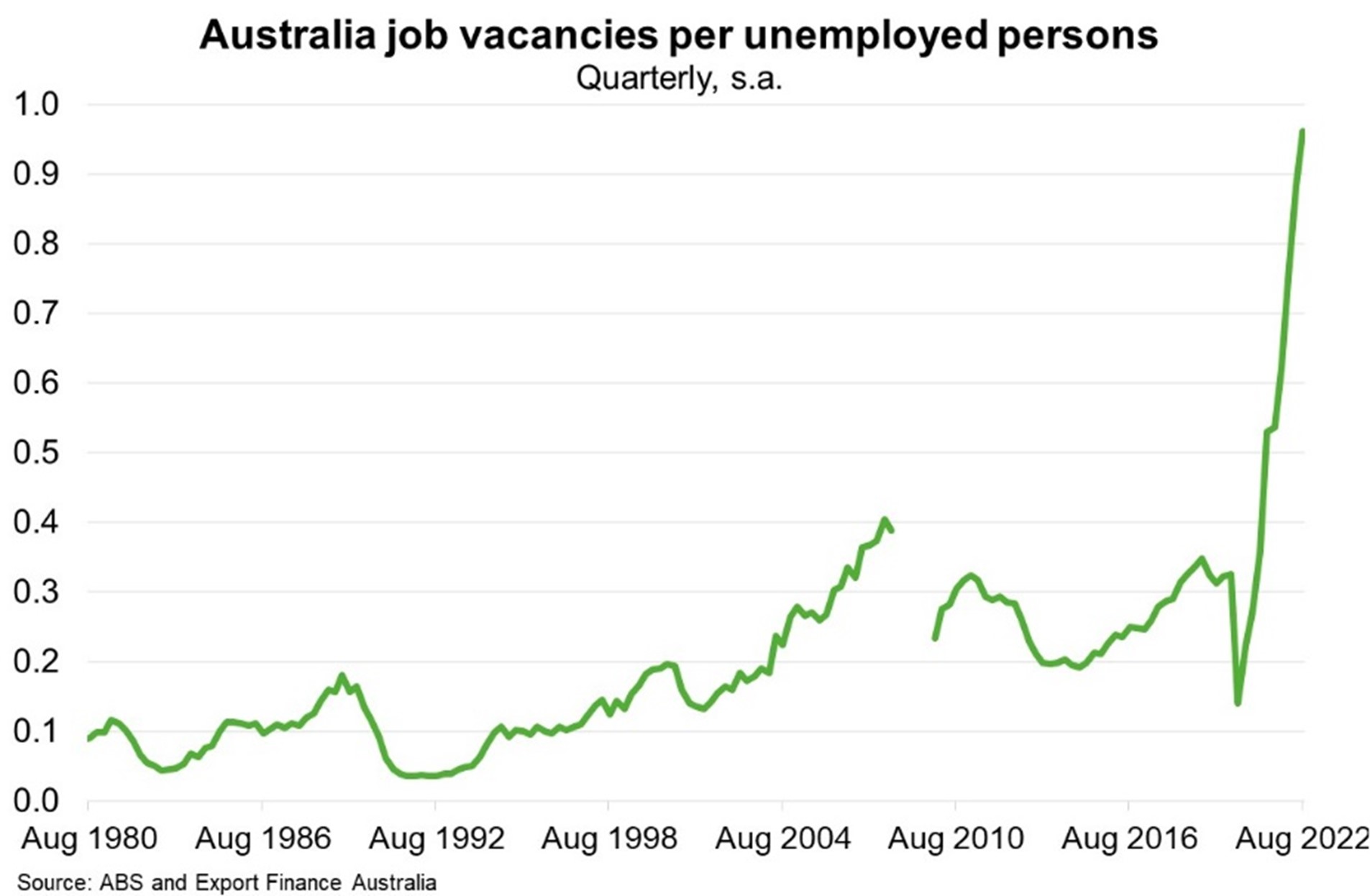Advanced Economies—Labour shortages exacerbate export headwinds
Tight labour markets and worker shortages have characterised most OECD countries over the past year. Employment in OECD countries returned to pre-crisis levels at the end of 2021 and continued to grow in 2022. The OECD unemployment rate fell to 4.9% in September, compared to 5.3% in December 2019. Vacancy rates are unusually high, particularly in low-pay sectors involving direct contact with customers, such as food and accommodation. Employment growth has been particularly strong in Australia; in October, employment was 5% higher than at the end of 2019. The unemployment rate hit 3.4% in October, the lowest level since 1974, with job vacancies roughly matching unemployed persons in August (Chart). The National Skills Commission finds that 11 of the top 20 largest employing occupations in Australia are in shortage.
Tight labour markets have prompted global competition for migrants and remote workers. But after a record pandemic-related slump in 2020, permanent migration to OECD countries only partially bounced back in 2021. Meanwhile, the inflow of working holiday makers, which help meet low-skilled labour needs in tourism and agriculture, decreased by 59% in 2020 and then again by 47% in 2021 in the largest OECD receiving countries. In 2021, the decrease was driven by a sharp drop in Australia (‑73%) and New Zealand (-94%). That said, while working holiday makers in Australia remain half their pre-COVID levels, they have grown more than threefold over 2022. Temporary entrants on skilled and other employment visas also rose sharply in Q3.
Labour market tightness is a headwind to Australian exporters. On the supply side, 44% of manufacturers cited ‘labour’ as the single factor most limiting production in the September ACCI–Westpac Survey of Industrial Trends, in line with the series high in 1973. On the demand side, labour market constraints are weighing on economic prospects in Australia’s major advanced export markets.

